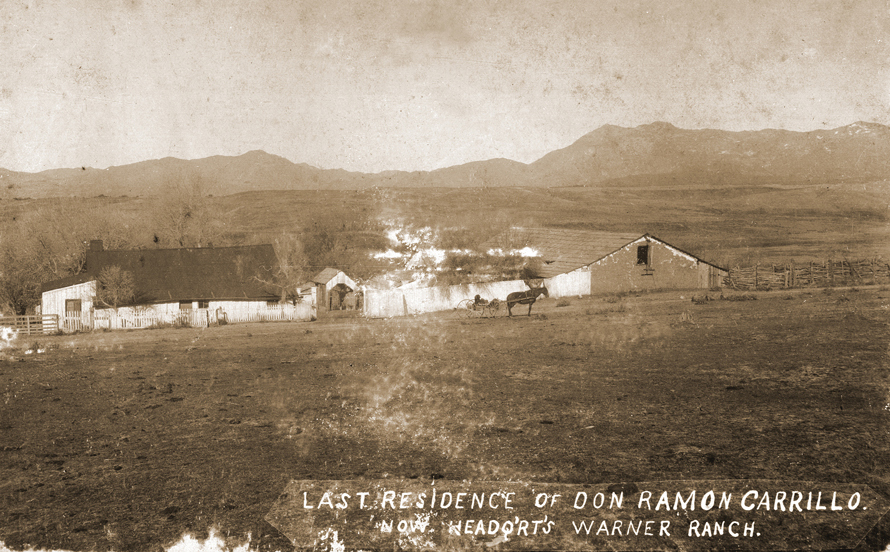VICENTA SEPÚLVEDA CARRILLO (1813-1907) was deeded nearly 18,000 acres of the 44,000-acre Valle de San José from Silvestre de Portilla. Vicenta and her second husband Don José Ramón Carrillo (1821-1864) built an adobe home in 1857 for their family, and she lived there until 1869.
Ramón Carrillo served as a United States Union Army Scout and, from the ranch, also provided beef and rations to Camp Wright. A skilled horseman and bear fighter, the adventurous Californio don met an early demise when he was ambushed and murdered in 1864.
Twice widowed, Vicenta had six children from her first marriage to Tomás Yorba (1787-1845), four that survived childhood; and eight with Ramón, the last two, Natalia and Garibaldo were born at Warner's Ranch. She was a well-respected, prominent business woman who supervised all of the ranch operations, such as raising and selling cattle, sheep, chickens, barley, and hay, with the help of her children and local Mission Indians she hired and for whom she provided living quarters at the ranch. During a smallpox outbreak in 1862, Vicenta personally tended to her employees in a large adobe barn near the house.
Known for her hospitality, Doña Carrillo was described by William Heath Davis, a prominent early San Diego settler, as "a beautiful and fascinating widow" who "managed her rancho with much ability."
 Vicenta carried on her ranching operation until 1868, when she and her family moved to Anaheim, California. Courtesy Coons collection Vicenta carried on her ranching operation until 1868, when she and her family moved to Anaheim, California. Courtesy Coons collection
In 1858, a year after the Carrillo family had established themselves at the ranch, Waterman L. Ormsby, correspondent for the New York Herald, wrote: "Warner's Ranch is a comfortable house situated in the valley, in the midst of a beautiful meadow, and with its shingled roof looked more like civilization than anything I had seen for many days. There were hundreds of cattle grazing on the plain, and everything looked as comfortable as every natural advantage could secure." |



